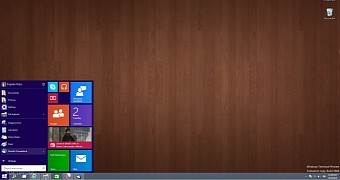Microsoft announced at the Windows 10 consumer event on Wednesday that its new operating system would be completely free of charge for Windows 8.1 and Windows 7 users if they upgrade in the first year after launch, which is indeed a radical change of strategy for an operating system that has always been available with a fee.
This offer, however, caused some confusion among those watching the webcast, as Microsoft left quite a lot of room for speculation, especially when mentioning that Windows 10 would be free for one year. Does that mean that you get a trial of the OS? Or maybe you have to pay to continue using it after one year...
These questions were answered by both Terry Myerson and Windows Insider boss Gabriel Aul, who explained that what they tried to say was that the upgrade to Windows 10 is free for just one year if you come from Windows 8.1 or Windows 7.
In other words, if your computer is currently running Windows 7 or Windows 8.1 and you wish to upgrade to Windows 10, you have 12 months to do it free of charge from the moment Windows 10 hits the shelves.
Free for the supported lifetime of the device
So, what happens after that one year? Do we still get updates?
Of course we do. Terry Myerson explained on the Windows blog that the free Windows 10 license would basically guarantee that you get patches and updates during the entire supported lifetime of your device.
Here's an excerpt from his post:
“We announced that a free upgrade for Windows 10 will be made available to customers running Windows 7, Windows 8.1, and Windows Phone 8.1 who upgrade in the first year after launch.”
“This is more than a one-time upgrade: once a Windows device is upgraded to Windows 10, we will continue to keep it current for the supported lifetime of the device – at no cost.”
What happens if you format your device and want to do a clean reinstall of Windows 10 more than one year after launch? That's still unknown right now, but we've contacted Microsoft for some clarification on this and will update the post when we get an answer.

 14 DAY TRIAL //
14 DAY TRIAL //